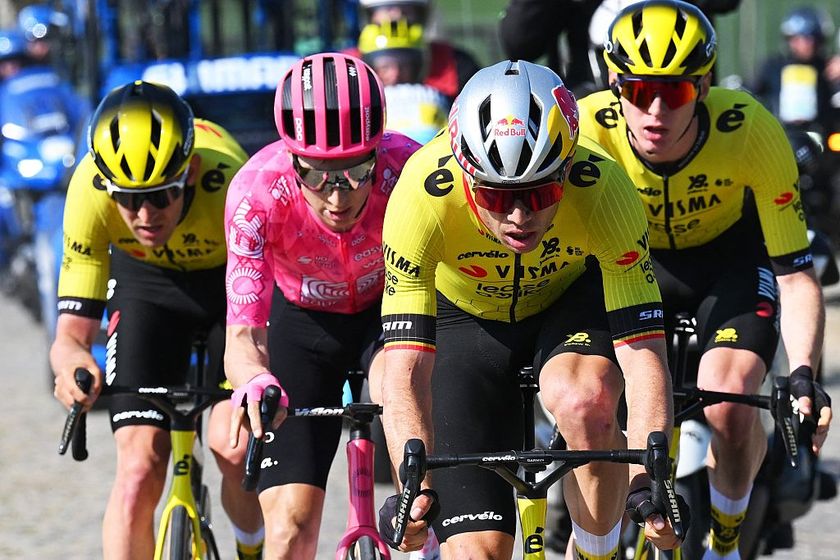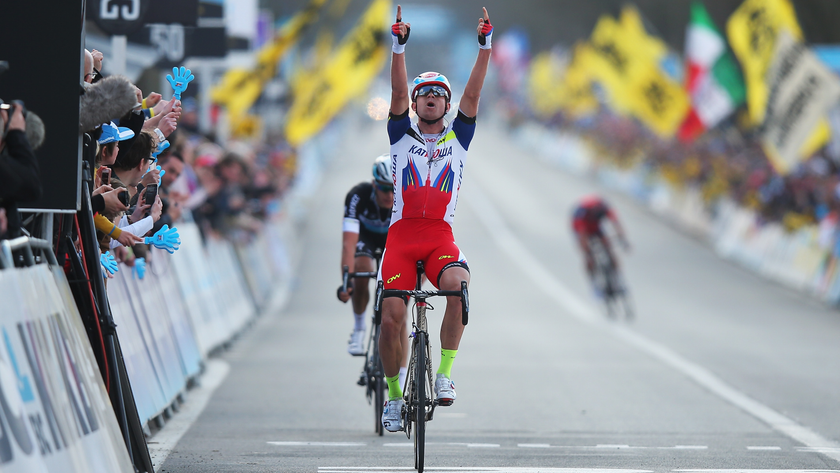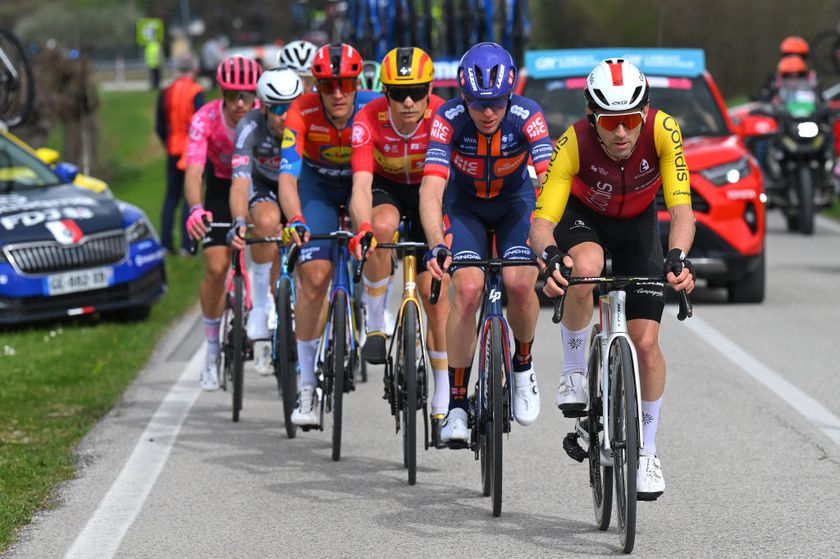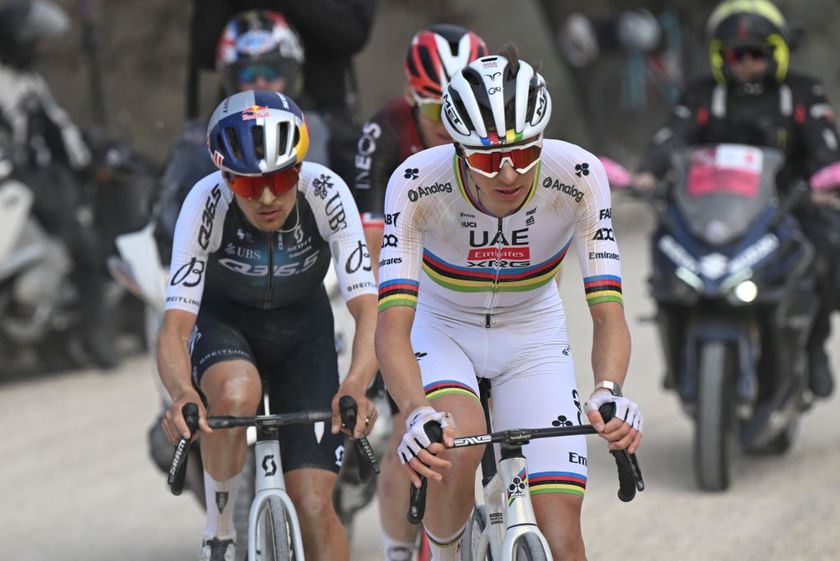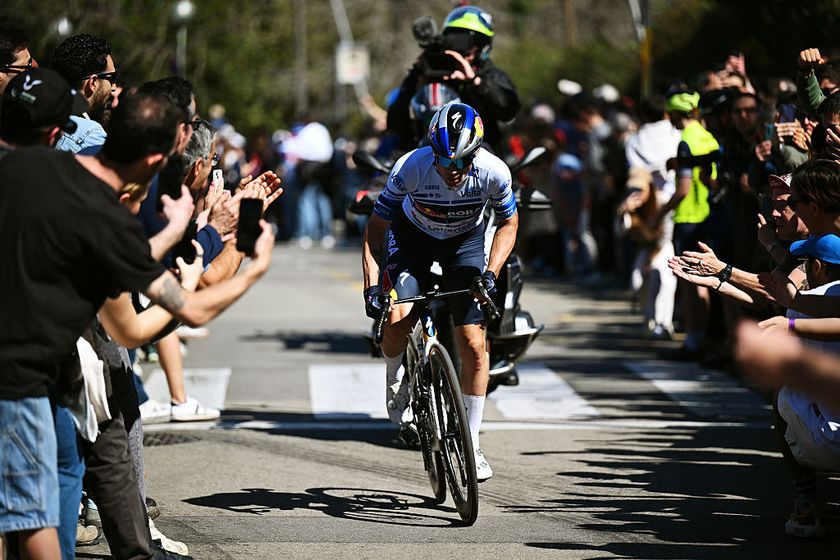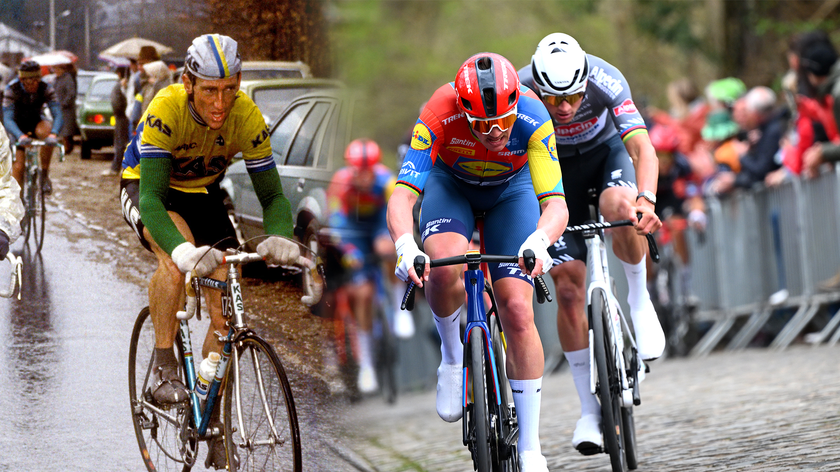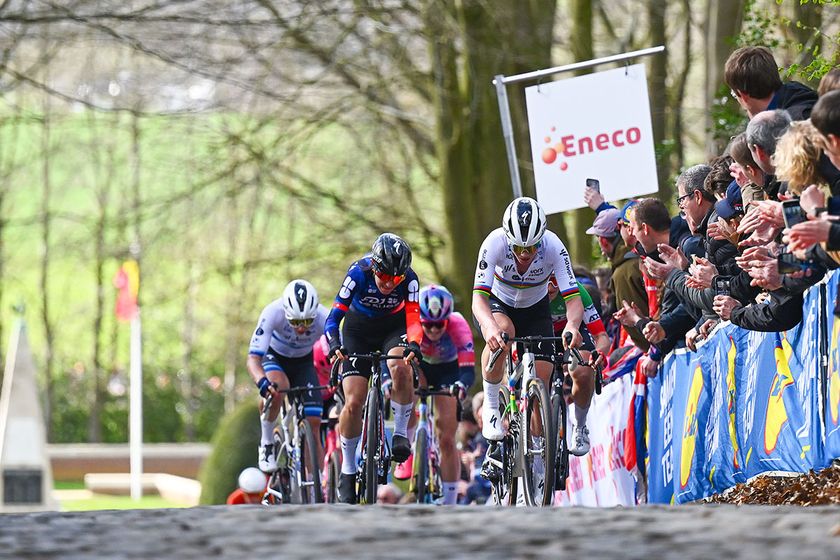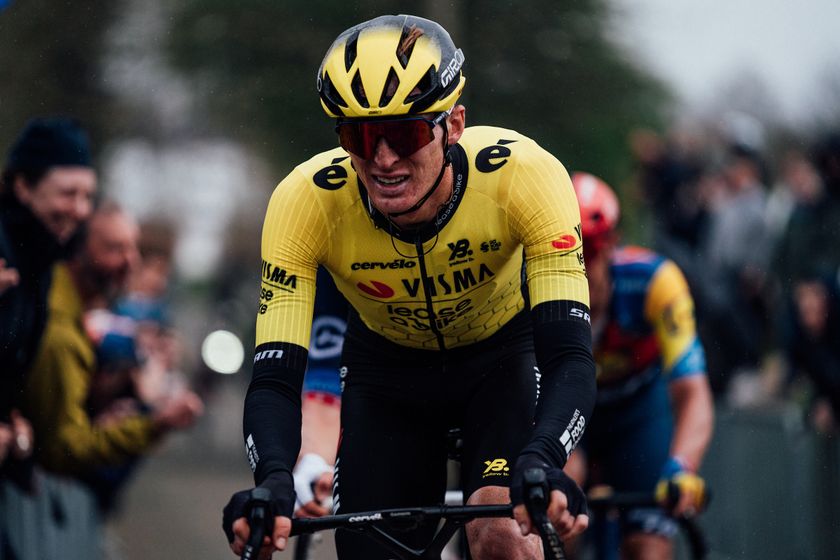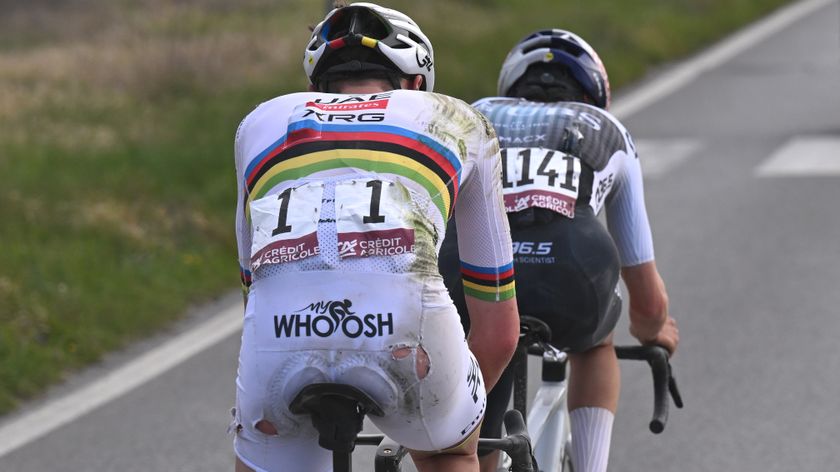Fitness questions and answers for March 27, 2005
Got a question about fitness, training, recovery from injury or a related subject? Drop us a line at...
Form & Fitness Q & A
Got a question about fitness, training, recovery from injury or a related subject? Drop us a line at fitness@cyclingnews.com. Please include as much information about yourself as possible, including your age, sex, and type of racing or riding. Due to the volume of questions we receive, we regret that we are unable to answer them all.
Carrie Cheadle, MA (www.carriecheadle.com) is a Sports Psychology consultant who has dedicated her career to helping athletes of all ages and abilities perform to their potential. Carrie specialises in working with cyclists, in disciplines ranging from track racing to mountain biking. She holds a bachelors degree in Psychology from Sonoma State University as well as a masters degree in Sport Psychology from John F. Kennedy University.
Dave Palese (www.davepalese.com) is a USA Cycling licensed coach and masters' class road racer with 16 years' race experience. He coaches racers and riders of all abilities from his home in southern Maine, USA, where he lives with his wife Sheryl, daughter Molly, and two cats, Miranda and Mu-Mu.
Kelby Bethards, MD received a Bachelor of Science in Electrical Engineering from Iowa State University (1994) before obtaining an M.D. from the University of Iowa College of Medicine in 2000. Has been a racing cyclist 'on and off' for 20 years, and when time allows, he races Cat 3 and 35+. He is a team physician for two local Ft Collins, CO, teams, and currently works Family Practice in multiple settings: rural, urgent care, inpatient and the like.
Fiona Lockhart (www.trainright.com) is a USA Cycling Expert Coach, and holds certifications from USA Weightlifting (Sports Performance Coach), the National Strength and Conditioning Association (Certified Strength and Conditioning Coach), and the National Academy for Sports Nutrition (Primary Sports Nutritionist). She is the Sports Science Editor for Carmichael Training Systems, and has been working in the strength and conditioning and endurance sports fields for over 10 years; she's also a competitive mountain biker.
Eddie Monnier (www.velo-fit.com) is a USA Cycling certified Elite Coach and a Category II racer. He holds undergraduate degrees in anthropology (with departmental honors) and philosophy from Emory University and an MBA from The Wharton School of Business.
Eddie is a proponent of training with power. He coaches cyclists (track, road and mountain bike) of all abilities and with wide ranging goals (with and without power meters). He uses internet tools to coach riders from any geography.
Get The Leadout Newsletter
The latest race content, interviews, features, reviews and expert buying guides, direct to your inbox!
David Fleckenstein, MPT (www.physiopt.com) is a physical therapist practicing in Boise, ID. His clients have included World and U.S. champions, Olympic athletes and numerous professional athletes. He received his B.S. in Biology/Genetics from Penn State and his Master's degree in Physical Therapy from Emory University. He specializes in manual medicine treatment and specific retraining of spine and joint stabilization musculature. He is a former Cat I road racer and Expert mountain biker.
Since 1986 Steve Hogg (www.cyclefitcentre.com) has owned and operated Pedal Pushers, a cycle shop specialising in rider positioning and custom bicycles. In that time he has positioned riders from all cycling disciplines and of all levels of ability with every concievable cycling problem.They include World and National champions at one end of the performance spectrum to amputees and people with disabilities at the other end.
Current riders that Steve has positioned include Davitamon-Lotto's Nick Gates, Discovery's Hayden Roulston, National Road Series champion, Jessica Ridder and National and State Time Trial champion, Peter Milostic.
Pamela Hinton has a bachelor's degree in Molecular Biology and a doctoral degree in Nutritional Sciences, both from the University of Wisconsin-Madison. She did postdoctoral training at Cornell University and is now an assistant professor of Nutritional Sciences at the University of Missouri-Columbia where she studies the effects of iron deficiency on adaptations to endurance training and the consequences of exercise-associated changes in menstrual function on bone health.
Pam was an All-American in track while at the UW. She started cycling competitively in 2003 and is the defending Missouri State Road Champion. Pam writes a nutrition column for Giana Roberge's Team Speed Queen Newsletter.
Dario Fredrick (www.wholeathlete.com) is an exercise physiologist and head coach for Whole Athlete™. He is a former category 1 & semi-pro MTB racer. Dario holds a masters degree in exercise science and a bachelors in sport psychology.
Scott Saifer (www.wenzelcoaching.com) has a Masters Degree in exercise physiology and sports psychology and has personally coached over 300 athletes of all levels in his 10 years of coaching with Wenzel Coaching.
Kendra Wenzel (www.wenzelcoaching.com) is a head coach with Wenzel Coaching with 17 years of racing and coaching experience and is coauthor of the book Bike Racing 101.
Steve Owens (www.coloradopremiertraining.com) is a USA Cycling certified coach, exercise physiologist and owner of Colorado Premier Training. Steve has worked with both the United States Olympic Committee and Guatemalan Olympic Committee as an Exercise Physiologist. He holds a B.S. in Exercise & Sports Science and currently works with multiple national champions, professionals and World Cup level cyclists.
Through his highly customized online training format, Steve and his handpicked team of coaches at Colorado Premier Training work with cyclists and multisport athletes around the world.
Brett Aitken (www.cycle2max.com) is a Sydney Olympic gold medalist. Born in Adelaide, Australia in 1971, Brett got into cycling through the cult sport of cycle speedway before crossing over into road and track racing. Since winning Olympic gold in the Madison with Scott McGrory, Brett has been working on his coaching business and his www.cycle2max.com website.
Richard Stern (www.cyclecoach.com) is Head Coach of Richard Stern Training, a Level 3 Coach with the Association of British Cycling Coaches, a Sports Scientist, and a writer. He has been professionally coaching cyclists and triathletes since 1998 at all levels from professional to recreational. He is a leading expert in coaching with power output and all power meters. Richard has been a competitive cyclist for 20 years
Andy Bloomer (www.cyclecoach.com) is an Associate Coach and sport scientist with Richard Stern Training. He is a member of the Association of British Cycling Coaches (ABCC) and a member of the British Association of Sport and Exercise Sciences (BASES). In his role as Exercise Physiologist at Staffordshire University Sports Performance Centre, he has conducted physiological testing and offered training and coaching advice to athletes from all sports for the past 4 years. Andy has been a competitive cyclist for many years.
Michael Smartt (www.cyclecoach.com) is an Associate Coach with Richard Stern Training. He holds a Masters degree in exercise physiology and is USA Cycling Expert Coach. Michael has been a competitive cyclist for over 10 years and has experience coaching road and off-road cyclists, triathletes and Paralympians.
Kim Morrow (www.elitefitcoach.com) has competed as a Professional Cyclist and Triathlete, is a certified USA Cycling Elite Coach, a 4-time U.S. Masters National Road Race Champion, and a Fitness Professional.
Her coaching group, eliteFITcoach, is based out of the Southeastern United States, although they coach athletes across North America. Kim also owns MyEnduranceCoach.com, a resource for cyclists, multisport athletes & endurance coaches around the globe, specializing in helping cycling and multisport athletes find a coach.
HR Recovery More training zones Hill training Coming back to riding Healthy weight gain Torque vs. power Tyre rolling resistance Speed training Fast starts A pound of fat Broken collarbone Heart rate at exhaustion Toe numbness Longer left leg Leg length discrepancies Positioning
HR Recovery
I am a CAT 5 racer. I've done 4 races this year. I've been cycling for about 1 1/2 yrs. My nagging limiter seems to by my ability to recover from maximal efforts. For instance during a race this past weekend there was a decent climb (0.6 miles, 11.3% avg Grade). I worked pretty hard climbing it to stay with the leaders. My max HR is 183 bpm. I averaged 175 bpm for the 4min and 30 sec it took me to climb. Once I crested I really had to back off considerably to get my HR to drop at all. This is typical of such an effort. Any advice on how I can improve this? Thanks.
Robert Polcyn
Robert,
More training zones
Rick, I have a question about your "zones" answer. I am learning about training zones and have read about the TT test or other similar road tests. I have read that these tests need be done on a flat road. Around here more than 1km without a stop sign can't be found and running them can be costly. It is possible to find a hill with say 40 minute effort to climb it. I Is an average HR for a long climb valid and if not why not?
Kai
Kai,
Hill training
I am hoping you could help me out with two items. My details:
I am a 32-year-old male, I have been riding for nearly 18 months and have just started to get serious after recovering from injury over a the last 3-4 month period, So fitness is down but illness is no longer an issue.
Firstly, I am hoping to increase my base level fitness over the coming months. I live approximately 3 km from the base of a 6 km 10% gradient climb. I am limited to a training time of 1 hour in the mornings on week days due to work commitments. My only real choices are a climb to the top and back home again, or a ride in the other direction of smaller hill climbs in an interval style ride. I am too far from flat roads to be able to get there and back in my time frame.
On the week ends I take part in a 50 kilometre training ride where I can keep the pace but lack the staying power that I would get if I increase my base level fitness.
My main question is am I better doing a hard hill climb on a regular basis or the interval style smaller hills. My concern is that training in the hills most of the time will not be as much a benefit to my enduring fitness, or even slow my speed down, as compared to longer rides on the flats with my limited week day times.
Secondly, I have been told I have a very toey pedalling style, Is this a good or a bad thing, and should I be trying to change that?
Grigor Mead
Grigor,
Coming back to riding
Hello,
Due to various personal and business reasons, I have taken a couple years off of racing, and about nine months off the bike in general. I am a category 3 racer and would like to hit the summer crits in somewhat competitive form. When looking at training programs, how exactly should I classify myself? i.e., given my history of racing, will I come back sooner? Am I essentially a beginner again? Does that make a difference? Should I be focusing only on base miles right now? Can I accelerate the time at which I would introduce interval/intensity? Any insight would be helpful, thanks.
Rob Camandona
Rob,
Healthy weight gain
Hi,
I am twenty years old and am a category two racer. I weigh 130lbs and am about 5'9" with a fairly well power to weight ratio, and put out a fairly large number of max watts for my size. As almost any cyclist I have a healthy appetite and I maintain my weight give or take a pound or two. My problem is with higher training loads more recently my immune system is lacking, which is normal, although in my case it is more substantial than normal. In recent months I have gotten sick on several occasions and seem plenty more susceptible to falling ill than the average person as well as the average athlete. This takes a large toll on my racing and training and hinders my endurance quite a bit, because I cannot get in the amount of hours that I would like to attain.
I have had some blood work done as I raised concerns to my doctor. She told me that I have no deficiencies as far as vitamins and minerals are concerned as well as electrolytes. Well after my latest bout with a cold, I have really thought about what the problem may be. What I have concluded is that I need to gain some fat, because my body fat is a whopping 3.2%. I am very lean and have a healthy appetite and have been following the zone diet, balancing carbs-protein-fat and take vitamin supplements as well including extra vitamin C.
How I came to this conclusion is that fat is obviously what stores energy and being that I have less than the average person, I do not store as much energy, subsequently in longer training rides and races usually about 3.5hrs or longer, I need to eat a larger amount of food than the most because I have less stored than most. Also, fat is where fat soluble vitamins (A, D, E, and K) are stored which vitamins play an important roll in immune function as they are tied together. This is what supports my theory.
I truly believe that my problem with a high vulnerability to getting sick comes from such a low body fat percentage. I do not want to necessarily gain weight, but more so fat. My question to you is could my problem be from such a low body fat percentage, and if so how do I healthily add more fat to my body mass? I have always had trouble putting on weight, and in this case fat. If you do not believe that my theory is correct, then what could this problem stem from and how can I correct it? Thanks!
Chris
Hi Chris,
Torque vs. power
Hi,
I recently started training with a PowerMeter and am wondering what the difference between Torque and Power is. Plotting the two variables on the same axis shows that (for me) the lines lie on top of each other for the most part, but sometimes they diverge. What do these numbers really signify?
John Wilde
John,
Tyre rolling resistance
My friend is getting rid of his tubular rear disk and replacing it with a clincher rear disk because he is convinced that rolling resistance for clinchers is superior to tubulars, enough to cut 1-2 min off a 40k TT. Is there anything to this? Don't all the pros use tubulars on TT bikes?
Park Firebaugh
Unless your friend is riding cross or BMX tubulars on his disk, he's going to be disappointed in his expectation of measurable increases in speed from switching to clinchers on a similar disk.
Speed training
I have just commenced riding in 9/2004 and commenced racing with local veterens about March 2005. Had never raced or ridden before, and slowly picking up on the tactics. I am considered a "strong rider" however have no speed, but grind out results rather than win sprint finishes . Our races are generally between 40 and 60kms and are handicapped mainly I struggle in scratch races as the pace varies so much, and I prefer to get in the groove and work consistently. Details are:
Age: 46, male height: 177 cm, weight: 81 kg, build: solid legs, averaging 270km per week including race. My background is in longer distance running.
Basically looking for some specific speed training tips I can work on, thanks for your assistance.
Steven Kennedy
Steve,
Fast starts
I was wondering if there is a way to better prepare for the fast starts at the beginning of a cross country mountain bike race? Besides getting an adequate warm-up, is there any way to incorporate a different training technique that will allow you to get used to going all-out off the line and then settling into a sustainable pace? My problem is that I take a long time to warm up so I end up in the middle to the back of the pack heading into the first singletrack section in any race. But I am a good technical rider so once we get to the single track and the pace has started to drop off, I find myself being held up for most of the first lap and then playing catch-up for the rest of the race. If only I could condition myself to the fast starts I could get close to the front in the first single-track and make up lots of valuable time. Any suggestions?
Chris Brunet
Chris,
A pound of fat
Hello Cyclingnews,
I have some questions about a pound of fat. Maybe Pam Hinton or another expert can illuminate.
How many Calories in a pound of fat, and how is this defined? Is this the amount of energy released by burning a pound of fat in a lab?
How many Calories do you expend to lose a pound of fat? I've heard human efficiency is about 23%. Is it simply this percentage?
How many excess Calories do you eat to gain a pound of fat? Does the metabolic cost of digesting food and depositing fat reduce the total?
How much weight do you lose if you bike enough to burn a pound of fat? Is there associated water weight (or other tissue) that is permanently lost when the fat is lost?
Does a fit cyclist losing weight from training just lose fat, or are there other less energy dense body parts that go away increasing weight loss per calorie?
Cyclists like me who are continually trying to cut weight may be curious. Thanks in advance.
Steve Young
Boulder, CO, USA
Steve,
Broken collarbone
I broke my collar bone in a racing crash last week. I realise this will be difficult without the x-rays, but I'll try to describe it. I landed on the side of my right shoulder and broke the bone in two places. Both breaks are in the middle of the bone which has left a small piece in the centre that has turned nearly 90 degrees. All of the bone ends are touching and as a result there is obvious shortening of the overall bone length. Both the emergency room doctor and the orthopaedic surgeon I saw recommended a figure eight strap and sling along with the kind words of "yours is pretty bad, but 99% of these things heal on their own". I'm supposed to go back to the orthopaedic surgeon in three weeks to ensure the bone is healing correctly.
I'm obviously not a doctor, but after a few days of agony at home, I am curious as to wether or not this extreme of an injury to the collar bone would be better of with a plate or pin to help the bones heal in the proper direction. Despite my best efforts, it's nearly impossible to completely immobilize my shoulder and arm and I can feel the bone ends moving around in there from time to time. Also, now that the swelling has subsided a bit, I can already feel a sharp point where one of the bone ends is just beneath the skin. Should I go to another doctor for a third opinion or should I tell my current doctor that I'm not comfortable with the current treatment? I'm certainly not in a rush to receive surgery, but I'm a very active 31 year old who still wants to get some good races in this year and I don't want to have to worry about shoulder pain for the rest of my life. Any advice would be greatly appreciated.
Matt Baugher
Matt,
Matt,
Heart rate at exhaustion
Hi, I am currently supporting a Degree in Fitness and Recreation student (Donna) at the moment - I am her assignment. She measures my fitness in a sports lab, writes me a programme for 6 weeks which I have to follow, then measures me again and has to explain any physiological differences (my fitness improvement or lack-thereof).
So last week I did the first set of tests - a VO2max tezt, an endurance test and a lactate threshold test on my bike in their science lab. The interesting thing was, when I was nearing the point of exhaustion in the exhaustion test, my heart rate dropped. And the same thing happened in the lactate threshold test even though I could feel my heart trying to pump its way up my throat...on the monitor my heart rate dropped.
She and her supervisor/tutor were surprised as this is not supposed to happen...I felt really tired, my heart was thumping and yet both times as my cadence dropped because although I was pushing real hard my legs wouldn't go fast anymore, my heart rate dropped as well. I have been searching around on the net for an explanation - have you heard of anything like this? Thanks in anticipation.
Helen Stewart Mackenzie
Helen,
Toe numbness
Dear Steve,
I found your website and wondered if you might have some thoughts on toe numbness. For the last 2-3 years, after about 20 minutes of riding, both great toes become numb. It's generally relieved within a few minutes of getting off the bike. I have no back pain or any neuropathic pain down the back of my legs. I've found that if I get out of the saddle more often, it takes longer to set in. If I'm riding the rollers, where it's difficult to get out of the saddle, I notice it more. On the rollers, I will occasionally notice perineal numbness.
All my bikes have the same dimensions for saddle height, handle-bar to seat distance etc. I use shoes with a carbon sole and Look cleats, although on a spin cycle, I use SPD cleats. However, I've even noticed it using regular shoes without clips. My saddles are Selle Gel Flite, Terry Ti-Fly, Selle Italia Flite, and Specialized Alias (155mm).
I've made sure shoe is correct size and use a padded insole. I've tried moving the cleat fore and aft. Most recent was your idea to move cleat 10mm ahead of axle. I wear size 44. An orthopedist thought shoe was most likely culprit, but it doesn't seem limited to shoe and more to seat. A neurosurgeon thought it was more likely related to nerve or vascular compression. I've tried several different saddles and tested your teetering idea. The saddle seems to be set in the correct fore-aft position.
My suspicion is that I'm putting pressure on the wrong place in my bottom, but I can't seem to figure out which way to move saddle (fore-aft, tilt) or change saddle (type). I've read the relevant articles on cycling news, but this seemed slightly different. Any suggestions would be much appreciated. Thank you.
Douglas Keim
Doug,
Longer left leg
Hi Steve,
I read your article from last week's Fitness Q&A about Kieran's longer left leg and have the exact same problem with the same legs. My chiropractor, through x-rays, has shown that rather than an actual leg length difference, my right hip is rotated slightly more forward and the left rotated slightly more back, which may be the problem this person is having. However, I too am interested in how to correct it. Shims on the inside of the left shoe do seem to help. What about sliding one of the cleats slightly more forward/back on one shoe to compensate? Thanks very much!
Ryan Bates
Ryan,
Leg length discrepancies
Thanks for all the great stuff on this site!
I have been reading numerous Q&A's about leg length discrepancy and the use of shims/wedges, and I am a bit confused. Hence a question: do shims go on the short leg side or the long leg side? Intuitively, I had expected shims to go on the short leg side, to reduce the extent of stretch at the bottom of the pedal stroke. But at least one answer (Steve's response to Kieran, 20 March 2006) suggested that my intuition is wrong.
My confusion might also relate to another are of possible misunderstanding. In terms of hip rotation, my intuition was that the hip would drop/move forward on the short leg side, as that leg "reached further" (needs to extend straighter) at the bottom of the pedal stroke. But again, the same recent answer indicated that it is the hip on the long leg side that rotates down/forward.
Can you clear this up for me please?
Finally, I note your advice that leg length discrepancies are only reliably measured by a CT scan or similar, bony projections being misleading. One thing I have noticed in myself is that when lying on my back with hips square, feet together on the floor and knees raised to a 90 degree angle (or more acute), my right knee is noticeably lower (closer to the floor) than my left knee. Presumably this must be caused by a difference in leg length? Couldn't in principle one use that difference in knee height to calculate a difference in leg length (square of the hypotenuse and all that)? Thanks!
David Archer
David,
Positioning
Steve Hogg,
I read all your advice on Cyclingnews.com - thanks for all the info on setup; I have followed all the suggestions and have a great ride!
I am wondering however in the case of fore and aft saddle position, when pushing the saddle back, how far is too far? I am 6"1 and 183kg, and am blessed with extreme lower back flexibility. Currently I have my knee one inch behind the pedal axel. What can happen if my saddle is too far back? What injuries can occur? Is there a way of telling if I am too far back? I feel comfortable, but I am wondering if I may be doing unseen or unfelt long term damage.
Apologies for emailing you direct however I have posted this to Cyclingnews.com six months ago and never heard back? I have resent today.
Brigham Milne
Brigham,
